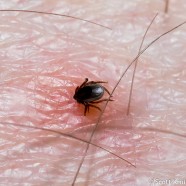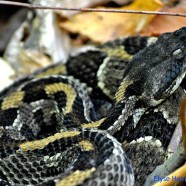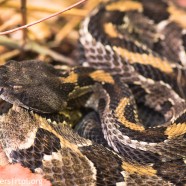Lyme Disease
I have Lyme disease. Thankfully most people have now heard of Lyme disease, but for those who have not, Lyme borreliosis is an infectious disease caused by bacteria of the Borrelia type and transmitted to humans (or pets!) by a black-legged/deer tick bite and subsequent feeding by the parasite. It typically takes 24 or maybe 36-48 hours of feeding for the disease to be transmitted if the tick is a carrier, though this is not a guarantee either direction. Lyme disease can cause flu-like symptoms nearly immediately, and if untreated they can be followed by severe headaches, joint and muscle...
Read MoreApex predator or small meal?
When looking at a “teenage” Timber Rattlesnake from above like this it seems rather insignificant and certainly unimposing. We know it is a venomous snake, which may add a bit of intimidation, but we should also know it is shy, passive and uninterested in harming a human unless it is being directly threatened. At this time of year there are much smaller Timber Rattlesnakes – some less than a foot long – in the form of neonates. These newly-born young have fangs and venom but a significant percentage will perish in their first year from a variety of threats. Twan...
Read MoreCrotalus horridus
Notice anything about the Timber Rattlesnake’s Latin name? Crotalus horridus? The species was named for the undeserved dread it inspired in many of the first colonists 300 years ago and the persecution of apex predators begin as soon as they arrived. The Gray Wolf is another example of a misunderstood and exaggerated fear that has been passed on unnecessarily through generations in America. Thanks to intensive research and a renewed educational media focus (less Little Red Riding Hood and more informative, factual documentaries) they have had a much more positive perception in recent...
Read MoreTimber Rattlesnake hunting
Timber Rattlesnakes have been drastically reduced in population in many areas of the Northeast. This drop correlates extremely well to regions where Lyme Disease has skyrocketed due to high levels of ticks. The University of Maryland and Edward Kabay found that rattlesnakes hunted small mammals to the degree that it kept the disease in check in areas where the population is strong. A single adult male can consume 2,500-4,500 ticks every year! If Timber Rattlesnake populations were at historic levels throughout their previous range maybe none of us would have to worry about ticks on ourselves...
Read More







